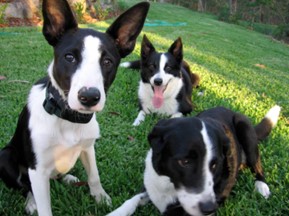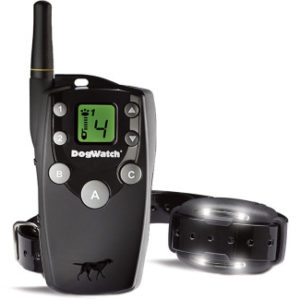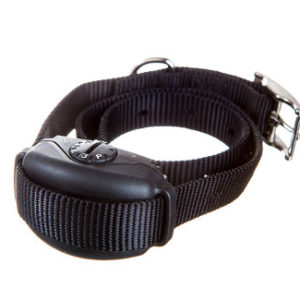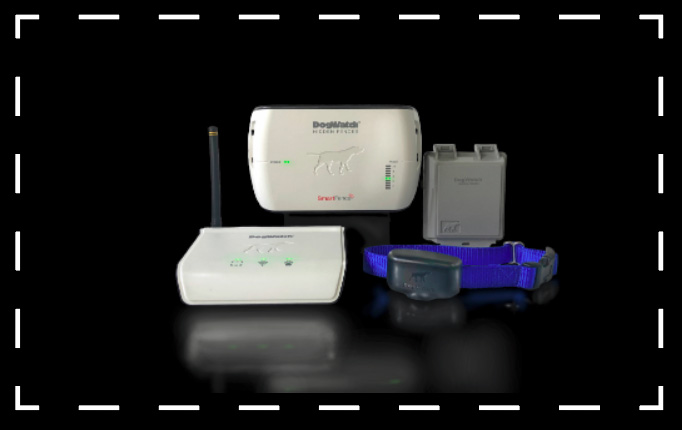
Even the most sought after, professional dog trainer will enlist the help of a dog training collar to assist with not only changing behaviour but changing behaviour that sticks. Dog training collars have been recognised as a life changing tools to redirect pets’ attention from undesirable behaviour to manageable, rewardable actions.
While electronic dog collars are undeniable in their ability to correct behaviour, some people are not aware that there are different types of collars available. Different dogs, and the many different situations that may arise with each animal are best approached with dog training collars made for their specific situation. The 3 main types of dog training collars are no bark trainers to correct problematic barking, remote trainers to correct general behaviour, and a walking trainer created to train dogs to walk better.
No Bark Dog Training Collar
We can all sometimes agree that there’s nothing we love hearing more than the sound of our dogs barking for us after a long day of work. The warning sign of a dog’s bark is also appreciated when danger is in proximity. However, there are certain times of the day where barking isn’t warranted and can be quite problematic and even a nuisance.
The No Bark Training Collar eliminates problematic barking by delivering adjustable vibrations to a dog’s collar to redirect their behaviour. As the name implies, this specific electronic dog collar is perfect for dogs that have difficulty with loud, rampant barking behaviour. It can fit dogs of any breed or size, and due to its 7 adjustable vibration settings can be adjusted to meet the barking behaviour of any breed as well.
Unlike many other dog trainer collars on the market, this specific training device offers features tailored to help gradually train your pet versus the traditional deliverance of potentially painful shocks to correct behaviour. The No Bark Training Collar includes Progressive Levels of vibrations that allow for the collar to reset to the lowest level of stimulation once a dog ceases barking. It also utilizes a bark counter to track your dog’s noise incidences, and monitor your dog’s behaviour even when you are not within earshot.
The No Bark Training Collar features a waterproof, lightweight design that is easily rechargeable and ideal for dogs who participate in all types of weather. If noise at the wrong time is an issue for your pet, you should look no further than this innovative no bark dog training collar, able to be used by dogs of all shapes and sizes.
Remote Dog Training Collar
More specific to problematic behaviour such as not coming when called or jumping on strangers in public, the remote dog training collar can eliminate issues in your dog unchanged by other training tools.
The BigLeash S-15 by Hidden Fence is one of the most popular electric dog collars in Australia. The remote dog training collar is the most advanced training collar in its line. It boasts a LCD screen not found on other remote dog collars, allowing owners to always be informed of transmitter and receiver status, in touch communication informing you if your dog is in safe range, and even multiple training option modes and a night feature! This specific dog training collar can be used in conjunction with hidden fences to create a safe, secure system for your pet.
Features that set this electronic dog collar apart are its whopping 15 levels of stimulation, specific to your dog’s behaviour needs. It also comes with a feature that allows you to control and monitor collars on 2 different dogs simultaneously. While other collars can receive information in the form of electrical impulses, this is the first collar that is able to also send messages to the controller of the owner, for a more responsive experience.
The Remote Dog Training Collar is the most advanced dog training collar that targets multiple problematic behaviours at once. For a more communicative, direct training interaction with your furry friend that also sends you feedback, this dog training collar will meet all of your needs.
Walking Dog Training Collar
For our four-legged friends that seem to think they’re taking us humans on a walk instead of the other way around, this walking dog training collar seems heaven sent.
The first of its kind, the Side Walker dog training collar uses brand new sensors to detect problematic walking behaviour and correct it via electrical stimulation. Excessive pulling, directionless walking and even walking too fast are all behaviours that can be picked up by microprocessors within the collar. No other dog training collar could effectively target such a specific behaviour and minimize its occurrence.
The Side Walker dog training collar features a lightweight digital display, as well as 5 adjustable settings to apply to the different walking behaviours of your individual dog.
This is the most suitable dog training collar for any dog that struggles with going on walks or behaving when leashed.
This video demonstrates just how effective this dog training collar is.
So, which type of dog collar is Best for Dog Training?
The type of dog collar that is the best for dog training is reliant on the type of training you are trying to teach your pet! While the No Bark collar is perfect for dogs that have problematic barking habits, it may not be ideal for your puppy that pulls on the leash when he’s on his morning walk. The Side Walker dog trainer collar is made with innovative sensors to target problem walking behaviours and will benefit any breed of any size with these types of issues. Finally, the Remote dog training collar is the best option for dog owners seeking a responsive, two-way experience when it comes to the training tools of their pets. The Remote dog training collar offers analytics, and an accommodatable experience to training your dog, that can also be paired with fencing to create an ultimate training and security system.
All these training tools can be found here, with step-by-step videos explaining how they work. Training is something that is best approached early! Check out our electronic dog collars and begin correcting your pets’ problem behaviours, today.





